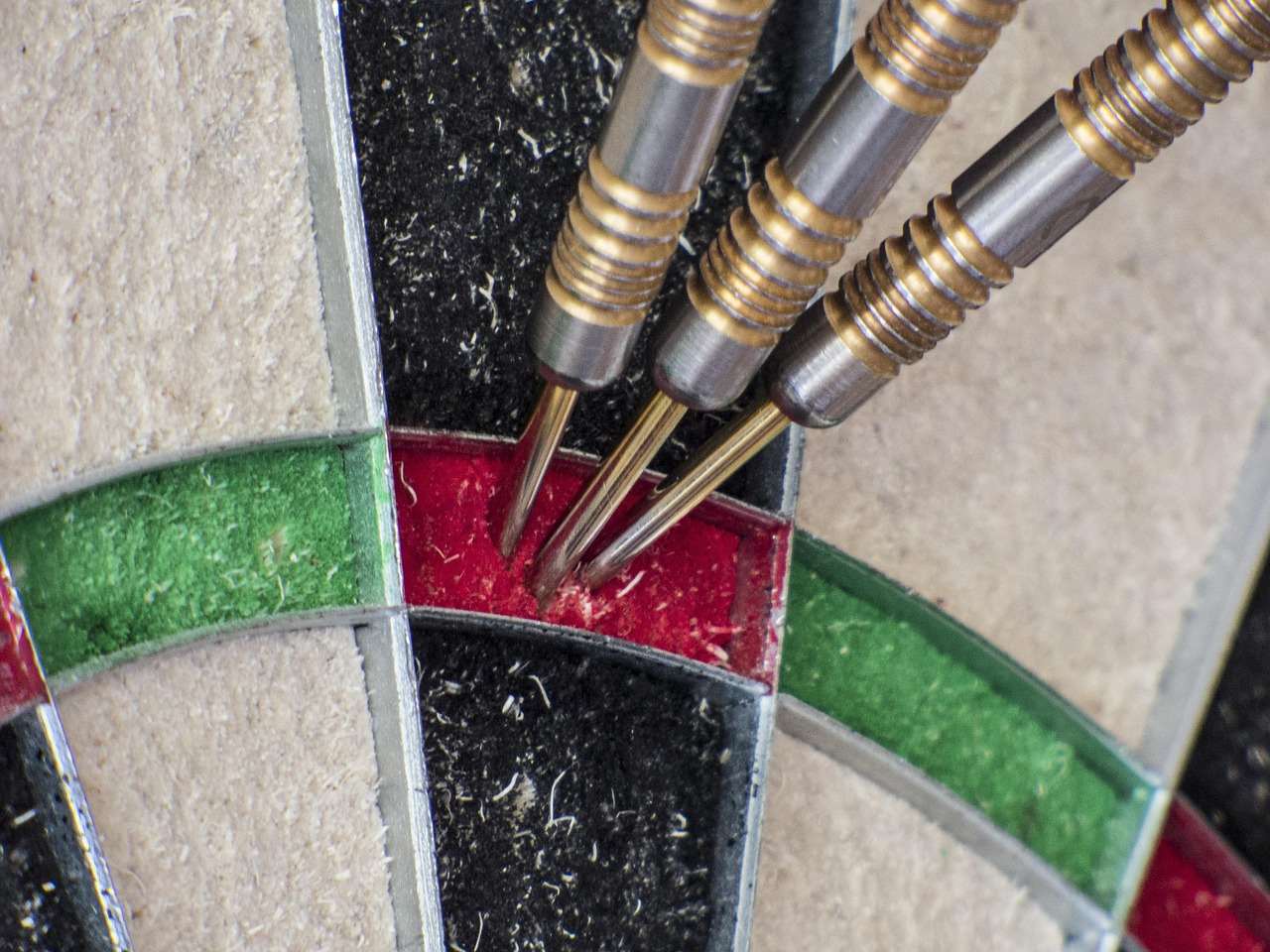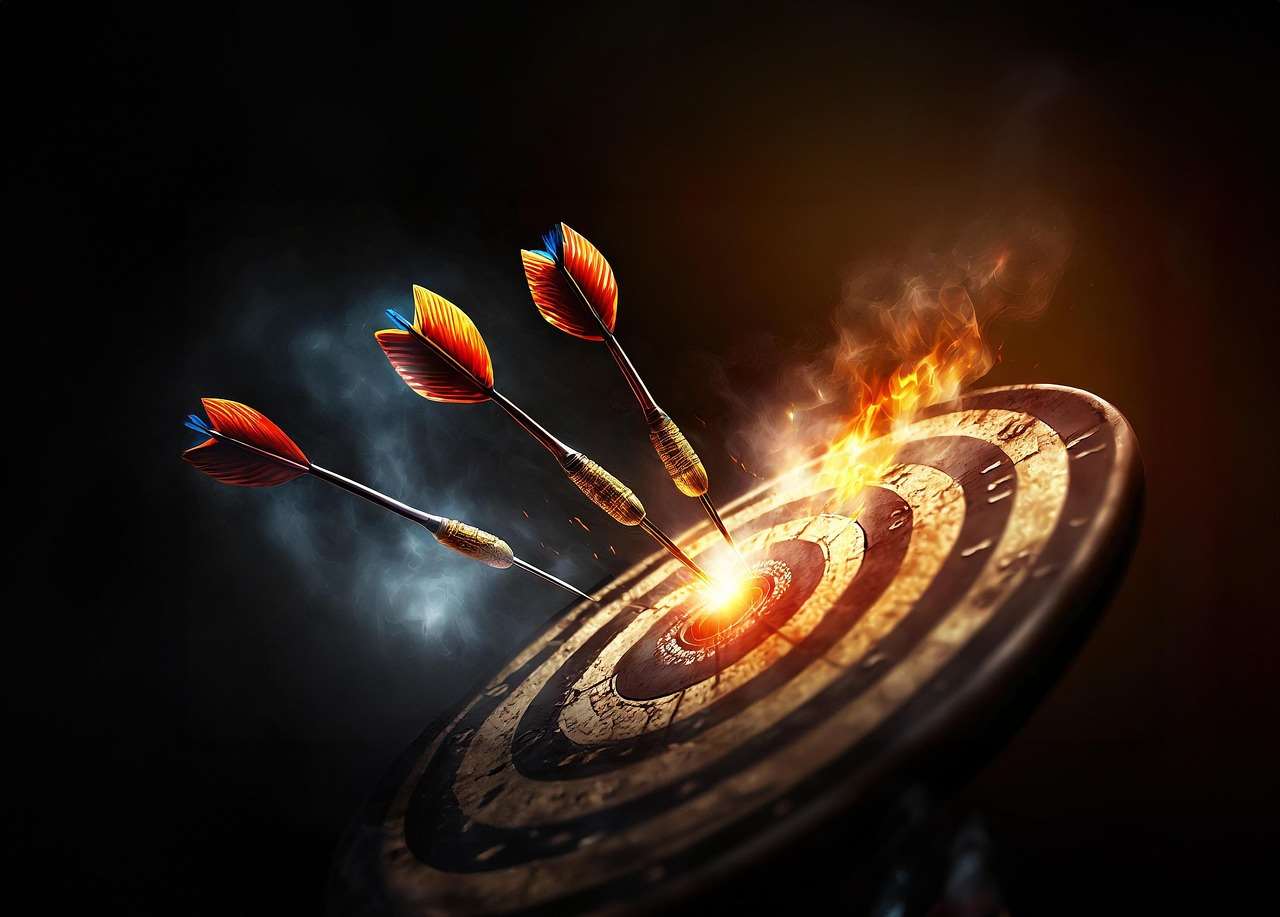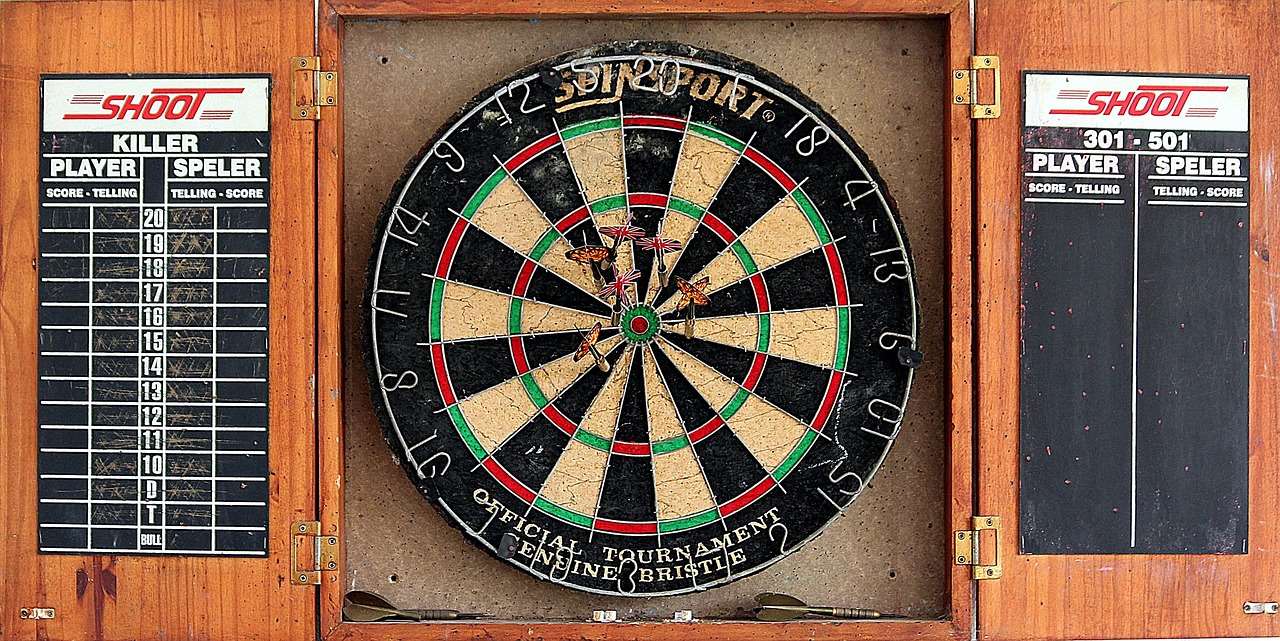Around the Clock darts tournament formats offer a fun and accessible way for players of all skill levels to compete, focusing on accuracy and consistent scoring. This article explores various ‘Around the Clock’ tournament adaptations, covering everything from basic gameplay to advanced strategies and customized rule sets.
⚠️ Still Using Pen & Paper (or a Chalkboard)?! ⚠️
Step into the future! The Dart Counter App handles all the scoring, suggests checkouts, and tracks your stats automatically. It's easier than you think!
Try the Smart Dart Counter App FREE!Ready for an upgrade? Click above!
What are the most common Around the Clock darts tournament formats?
Around the Clock, also known as ‘Round the Board’, is a classic darts game where players must hit each number on the dartboard in sequential order. However, when organizing an Around the Clock darts tournament, several variations can be implemented to enhance the challenge and cater to different skill levels. These variations alter the game’s pace, difficulty, and strategic elements.

The most common tournament formats include:
- Standard Around the Clock: Players start at 1 and must hit each number in ascending order (1, 2, 3…20). The first player to hit 20 wins. If you’re new to darts, it’s useful to familiarize yourself with Basic Darts Fundamentals for Beginners.
- Double Around the Clock: Players must hit the double of each number in sequence. This format significantly increases the difficulty.
- Treble Around the Clock: Even more challenging, players must hit the treble of each number in order. This is typically reserved for highly skilled players.
- Clockwise/Counter-Clockwise: Tournaments can alternate between clockwise and counter-clockwise progressions, adding a mental challenge.
- Team Around the Clock: Teams of players alternate throws, each team member contributing to the overall score and progression around the board. This is excellent for social events.
- Handicap Around the Clock: We can how to make darts fairer with handicap rules, such as allowing weaker players to start at a higher number.
Specific scoring rules variations
Beyond the standard progression, variations in scoring can also define different Around the Clock darts tournament formats:
- Single Hit to Advance: Only a single hit on the target number is required to move to the next.
- Multiple Hits Required: Require players to hit the number a set number of times (e.g., twice) before advancing. This demands greater consistency.
- Bust Rule: Implement a “bust” rule where, if a player hits a number out of sequence, they must restart at the previous number (or even back at 1).
Advanced Around the Clock Tournament Variations
To further enhance the complexity and appeal to seasoned players, advanced variations of Around the Clock darts tournament formats can be incorporated. These formats introduce elements of strategy, precision, and adaptability.

- Around the Clock with Outshots: After hitting 20 (or the final target number), players must then check out with a standard double outshot (e.g., double 20 to win).
- Combined Around the Clock: Players must alternate between hitting singles, doubles, and trebles in a specific sequence (e.g., single 1, double 2, treble 3, single 4, etc.).
- Mystery Number Around the Clock: Before the tournament, assign a secret number to each player. Hitting their mystery number awards bonus points or allows them to skip to the next number.
- Around the World: Players must hit the single, double, and treble of each number before moving on. A true test of accuracy and control.
How to organize your own Around the Clock darts tournament
Organizing a successful Around the Clock darts tournament requires careful planning and execution. Consider these key steps:
- Define the Format: Clearly define the specific Around the Clock darts tournament format you’ll be using (e.g., Standard, Double, Team). Communicate the rules clearly to all participants.
- Determine Entry Fees & Prizes: Decide on an entry fee (if any) and determine the prize pool distribution.
- Set the Tournament Schedule: Establish a clear schedule for matches, including start times and break intervals.
- Create a Bracket or League System: Choose a tournament structure (single elimination, double elimination, round robin) based on the number of participants.
- Prepare Score Sheets: Design score sheets for recording scores and tracking progress.
- Ensure a Proper Dartboard Setup: Ensure the dartboard is correctly mounted at the regulation height and distance.
- Promote the Tournament: Use social media, local dart leagues, and word-of-mouth to promote the tournament and attract participants.
Essential Tournament Supplies
Make sure you have all the necessary supplies for a smooth tournament:
- Dartboards and Darts (consider providing house darts)
- Scoreboards or electronic scoring systems
- Score sheets and pens
- A measuring tape for verifying dartboard setup
- A designated tournament director or organizer
Benefits of Around the Clock Darts Tournament Formats
Hosting an Around the Clock darts tournament offers several benefits:
- Accessibility: Suitable for players of all skill levels, making it inclusive and engaging.
- Simplicity: Easy to understand and play, even for beginners.
- Fast-Paced: Matches are typically shorter than traditional darts games, allowing for more rounds and variety.
- Social Interaction: Encourages camaraderie and friendly competition among participants.
- Skill Development: Promotes accuracy, consistency, and mental focus.

Adapting Around the Clock for Different Player Skill Levels
One of the strengths of the Around the Clock darts tournament formats is their adaptability. You can modifying rules for mixed-level dart players. Consider these adjustments:
- Handicaps: Allow weaker players to start at a higher number (e.g., starting at 5 instead of 1).
- Targeted Practice: Beginners can focus on hitting specific numbers before participating in a full tournament.
- Simplified Rules: For beginners, initially only require hitting the segment of the number, not necessarily a specific double or treble.
- Team Play: Pairing stronger and weaker players on teams can balance the competition and provide learning opportunities.
Around the Clock: A Fun Variation
There are many ways for fun dart game variations with modified rules, but this type of game is one of the best!

Tips for Winning an Around the Clock Tournament
While luck plays a role, skill and strategy are paramount to winning an Around the Clock darts tournament:
- Focus on Accuracy: Prioritize hitting the target number consistently.
- Develop a Smooth Throwing Technique: Maintain a consistent stance and release.
- Practice Regularly: Regular practice builds muscle memory and improves accuracy.
- Stay Calm Under Pressure: Avoid letting nerves affect your throw.
- Analyze Your Opponent: Observe your opponent’s strengths and weaknesses to adapt your strategy.
Creative Twists for Around the Clock
Injecting a bit of creativity can spice up your Around the Clock darts tournament formats. Try these ideas:
- Themed Tournaments: Host a tournament with a specific theme (e.g., Halloween, Christmas).
- Costume Contests: Encourage participants to dress up in costumes.
- Raffle Prizes: Offer raffle prizes to participants throughout the tournament.
- Potluck Snacks: Encourage participants to bring snacks and drinks to share.

Future Trends in Around the Clock Tournament Formats
The future of Around the Clock darts tournament formats likely involves:
- Increased Use of Technology: Electronic scoring systems and online tournament platforms will become more prevalent.
- Global Online Tournaments: Participants from around the world will be able to compete in online Around the Clock tournaments.
- Augmented Reality Integration: AR technology could enhance the gameplay experience by overlaying virtual targets and scores on the dartboard.
- More Sophisticated Handicap Systems: Algorithm-based handicap systems will ensure fairer competition among players of varying skill levels.
Conclusion
Around the Clock darts tournament formats provide an accessible and enjoyable way for dart enthusiasts to compete, improve their skills, and socialize. By understanding the various formats, adapting the rules to suit different skill levels, and incorporating creative twists, you can create a memorable and engaging tournament experience. Now it’s time to gather your friends, set up your dartboard, and start your own Around the Clock tournament! Consider all the information in this article, and get practicing your throwing.
Hi, I’m Dieter, and I created Dartcounter (Dartcounterapp.com). My motivation wasn’t being a darts expert – quite the opposite! When I first started playing, I loved the game but found keeping accurate scores and tracking stats difficult and distracting.
I figured I couldn’t be the only one struggling with this. So, I decided to build a solution: an easy-to-use application that everyone, no matter their experience level, could use to manage scoring effortlessly.
My goal for Dartcounter was simple: let the app handle the numbers – the scoring, the averages, the stats, even checkout suggestions – so players could focus purely on their throw and enjoying the game. It began as a way to solve my own beginner’s problem, and I’m thrilled it has grown into a helpful tool for the wider darts community.